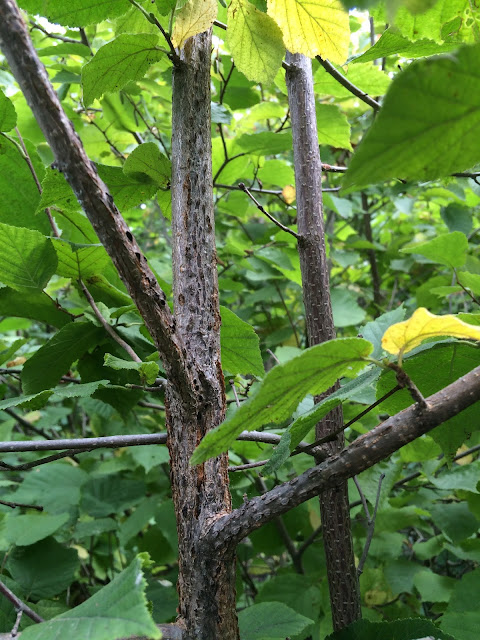Culling the Orchard
We had an exceptionally warm fall this year, which gave me time to cut down and start removing some of the inferior hazelnut plants. Most of these plants had small, thick shelled, or bad tasting nuts and other plants suckered badly or had EFB (Eastern Filbert Blight).
All the plants you see above are resistant to EFB.
I originally thought it would give more spacing for the better plants, but found that some of these plants were still in groups too close to each other. I prefer 5 ft spacing with 8 to 10 ft between rows, but because of limited space I plant them a little closer.
As you can see in this picture I have some large open areas that will have to be filled with some of my better hazelnut plants.
These are about 120 plants that were cut down.
To eliminate suckers from coming up from the stump next spring, a herbicide is painted on the stump and then covered with soil.
The plant stems that I found this year that were infected with EFB where burned immediately to help reduce the spread of the fungus. The green branches didn't burn very well so I had to add some dry ash logs which did the trick.
Eastern Filbert Blight
The other pictures looked so black and white so I thought some color pictures would look nice and I could explain a little bit about EFB.
In the spring the fungus first infects young new shoots, but does not show up visibly on the branch for the first year. Sometimes I can spot an infected stem in the fall by a flat spot on the stem and a brown color in the flat area when the bark is removed. The picture above is a two year old stem and starting to show the tell tale black cankers in a row going up the stem.
I try to remove the infected stems as soon as possible to reduce the spores infecting other plants.
This plant had EFB for about 5 years before I spotted it.
Some plants produce good nuts but are not resistant to EFB, so I prune any stem that is infected, and also remove all the catkins (male flowers). The catkins are removed to limit the plant passing on its non-resistance to EFB.
Here is a close up of an infected branch that is 3 years old.
If Eastern Filbert Blight is not pruned out every year the hazelnut plant will look like this in 10 years.
Right now there is no fungicide to slow down or kill the fungus so removing the plant with no resistance to EFB or pruning is the only option.
I've started training the new cat to hunt squirrels, but so far he hasn't been able to climb as fast as the squirrels. I wonder if a mink would do a better job.
Here's to a good hazelnut crop this year!!
Hope everyone has a happy and safe 2021:)




